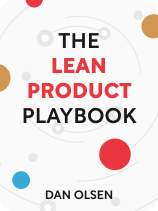

This article is an excerpt from the Shortform book guide to "The Lean Product Playbook" by Dan Olsen. Shortform has the world's best summaries and analyses of books you should be reading.
Like this article? Sign up for a free trial here.
Is your product development process feeling slow and inflexible? Are you looking for ways to improve collaboration and customer-focused thinking?
Agile product development might be the solution you’re seeking. This approach breaks projects into smaller, manageable cycles, allowing for greater adaptability and faster delivery. You can use popular methods such as Scrum and Kanban—or hybrid approaches that combine the best of different approaches.
Keep reading to discover how Agile can transform your product development process and help you achieve greater success.
Agile Product Development
After you’ve tested your product and validated its product-market fit, the next step is to build and launch your product. Dan Olsen suggests you use an “Agile” product development methodology. With an Agile approach, you’ll break projects into small cycles of work—as opposed to following a traditional “waterfall” or sequential approach of crafting a detailed plan at the beginning of a project and working continuously and consistently until every step of the plan is completed in its predetermined order.
Segmenting a project into smaller pieces increases flexibility, collaboration, and customer-centric thinking, allowing you and your team to respond quickly and adapt to changes. It also reduces the margin for errors seen in larger projects and allows you to put deliverables in front of customers sooner.
According to Olsen, the two most popular Agile methodologies are Scrum and Kanban. Scrum divides work into small manageable parts called “sprints,” typically lasting one to four weeks. Kanban involves visualizing tasks by putting cards featuring user stories on a board, allowing teams to see the workflow and manage it effectively. Olsen suggests experimenting with one for a few months to figure out which works best for your purpose.
| The Best of Both Worlds: Use Hybrid Approaches Instead of choosing between Agile and traditional “waterfall” methodologies, some experts recommend you take a hybrid approach to compensate for the weaknesses of each methodology. While Agile methods promote flexibility, speedy delivery, and customer-oriented thinking, they can fall short in providing proper documentation and predicting precise timelines and costs. Conversely, while the waterfall model provides predictability, detailed documentation, and a structured approach, its rigidity can lead to late discovery of issues and difficulty adapting to evolving needs. By blending the two, as some companies have done, you can strike a balance between structure and adaptability and achieve greater project success. Similarly, you can also consider an approach that combines Scrum and Kanban—a hybrid methodology aptly named Scrumban. It brings together the structured nature of Scrum and the visual, tracking capabilities of Kanban for improved project management. Scrumban provides increased flexibility, continuous delivery, and faster issue resolution. Experts recommend using this hybrid methodology for software development projects with evolving requirements, teams working on simultaneous projects, and for startups. |
Optimize Your Product With Analytics
Once you’ve built and launched your product, continue to optimize your business by monitoring and improving key metrics. Olsen recommends the following steps:
1) Define the key metrics for your business. These are performance indicators for your product—for example, conversion rates, retention, and sales volume. Your choice of metrics depends on your product and your business’s overall objective.
2) Record your baseline metrics. Knowing where you currently stand is crucial to making improvements to your product. Olsen recommends you create a dashboard that allows you to easily see each metric and track its performance.
3) Select the most valuable metric to improve. Identify which metric would provide the biggest ROI if improved. For example, Olsen writes that for newly launched products, it’s typically more valuable to improve retention first instead of other metrics like acquisition of new customers.
4) Implement the best idea for improvement. Estimate the ROI of each strategy you come up with for improving the metric, and then implement the best. Afterward, record any changes to assess whether you need to continue optimizing or if you should switch to improving another metric.
| Create a Metrics Scorecard In Traction, Gino Wickman discusses a “scorecard”—a similar concept to Olsen’s dashboard—that can provide an immediate overview of how your business is performing each week. This scorecard can help you shape Olsen’s recommendations into an organized, tangible tool. Let’s look at the steps for creating one: First, to define key metrics, Wickman suggests you brainstorm with your leadership team about which numbers best reflect how your business is doing on a weekly basis. Once you’ve identified 12 metrics, create a spreadsheet: List each category in the far left column, followed by a goal column and then columns for adding numbers under dates running across the top. Wickman recommends your spreadsheet cover 13 weeks. Second, while Olsen recommends recording baseline metrics, he doesn’t specify how often you should review them. Wickman says you should review your scorecard every week with your leadership team to spot potential problems early and adjust your course to ensure you’re on track to meet goals. Third, instead of choosing one metric to improve at a time, Wickman suggests you create weekly goals for all of them. Take every metric and make one person responsible for it—write their name down alongside it. This assigns clear accountability and produces results. |

———End of Preview———
Like what you just read? Read the rest of the world's best book summary and analysis of Dan Olsen's "The Lean Product Playbook" at Shortform.
Here's what you'll find in our full The Lean Product Playbook summary:
- An entrepreneur’s guide to making the best product on the market
- How to create a new product without gambling on the results
- How and where to find your target market and audience






